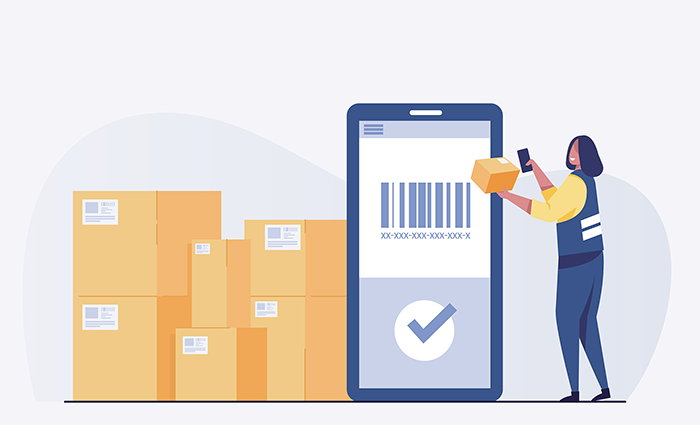Make supply chain woes a thing of the past with end-to-end digitization – and that includes packaging and labelling
MODERN alternatives
Siloed operations make businesses vulnerable to disruption, and poorly placed to respond when issues do occur, and are often caused by operational challenges such as acquiring competitors in new geographies or changes in legislation. It is clear that businesses of all sizes must ramp up digital transformation efforts to ensure end-to-end integration remains a priority, says Arjun Khanna, Chief Technology & Innovation Officer at Kallik. Critically, that must include the pivotal but regularly overlooked artwork and labelling processes – it is essential that ‘what it says on the tin’ is accurate in every detail.
When disruption occurs, the ability to react quickly and effectively to avoid a ripple effect throughout the supply chain is vital. But a recent survey of manufacturers found that up to 90 percent struggle with integration challenges that are essential to maintain smooth supply chain flows.
Despite the much-publicized threats to business continuity, many firms continue to operate a patchwork of core systems with either little to no integration with each other. They are often developed piecemeal with in-house fixes or manual workarounds. While this may help maintain the status quo of day-to-day operations, it is highly vulnerable to disruption and far from agile compared to more digitally mature competitors.
Disparate data predominates legacy systems
Thankfully, the latest wave of digital transformation has placed an increased focus on the safety of cloud-based solutions and customizable implementations for core platforms such as ERP systems. However, other, more legacy systems or manual processes are equally critical to operational success – yet often neglected in the grand scheme of ‘digital transformation’ projects. This lack of integration is especially noticeable among businesses operating in highly-regulated industries such as pharma, medical devices or chemicals, despite these being prime candidates for short-notice impactful disruption.
 Integration is critical to artwork, labelling and packaging
Integration is critical to artwork, labelling and packaging
The disconnect is particularly noticeable in siloed product assets, where labels, artwork and symbols are often subject to minimal version control or global insight, and where integration with print requests and data flows from the ERP system, for example, are yet to be embraced as part of an integrated system.
But these label and artwork management systems play an increasingly critical role in ensuring product consistency, consumer safety and regulatory compliance. As a result, having these operations and assets siloed is non-negotiable. Integration with other platforms such as regulatory systems is a must.
Underestimate it at your peril
Take a label for a simple medical device intended for the EU market. This must pass through extensive review and approval processes to ensure medical, marketing and regulatory information – including various symbols and markings – are all present, correct and consistent. To be sold broadly throughout the EU, this device label would in theory need be translated into 24 different languages.
This upstream process is therefore very delicate and susceptible to disruption or human error. If an incorrect version of a regulatory symbol is used, or some medical information is changed in one language then not updated across all other language versions, this could introduce a major error – potentially even threatening the health of the end-user and triggering a costly product recall.
If the systems involved in this workflow are not fully integrated into other critical business systems, processes and databases, the risk of recalls can rise significantly.
Choose a digital artwork and labelling system that suits integration
Consolidation and integration is key when it comes to rationalizing and standardizing systems and processes as part of a company’s digital maturity project. That means finding proven, feature-rich solutions that can be deployed across all necessary department and locations worldwide, with full integration capability to ensure seamless operation with other core systems.
Label and artwork management platforms are no exception. Indeed, these must be able to integrate with other critical software as standard – from Regulatory Information Management (RIM) systems, Enterprise Resource Planning (ERP) platforms and Product Lifecycle Management (PLM) solutions.
Go the extra mile – establish a single source of truth with integration in the cloud
Business leaders would also be well-advised to opt for a cloud-based solution that can be readily deployed and accessed in any location by any department, adding a new level of scalability.
As businesses connect and integrate critical IT infrastructure, the benefits of truly unified operations and visibility become apparent.
For example, if a specific product asset or symbol must be replaced or updated at short notice, users can tap into the ‘Where Used’ functionality within a fully integrated management solution to identify every instance of the existing asset actively being used worldwide – and effortlessly make a bulk update in turn. No manual searching of data siloes, no piecemeal updates across multiple teams – this is all easily accessible and actionable in a ‘single source of truth’.
The benefits of integration are all encompassing
This unlocks powerful end-to-end audit and version control capabilities – allowing any users with relevant permissions to make changes and flag comments in a clear, actionable format. By integrating a solution with further powerful features, such as automated artwork generation, businesses can significantly reduce the risk of human error in asset creation, updating and positioning.
For artwork and label management solutions, a cloud-based end-to-end platform is an ideal candidate focus for any integration-minded business – providing a standard set of APIs out the box as a tried-and-tested ‘blueprint’ to follow during implementation.
From a security perspective, shifting to a single artwork and label management platform also brings fresh benefits – with a single sign-on and corporate login enhancing system security, user management and data protection.
The race to digital transformation is on – keep pace with innovative rivals
The ability of integration to ensure end-user safety in highly regulated industries, and reduce artwork and labelling errors is immense. From distributing new products to exploring new geographies, businesses can be agile, adaptable and resilient with integration providing a robust digital backbone. With supply chain disruption set to continue, there’s no time like the present to assess legacy IT stacks and equipment for either heavy integration, or replacement with modern alternatives.
For a list of the sources used in this article, please contact the editor.
Kallik
www.kallik.com
Kallik, the enterprise labelling company, provides regulated industries with a definitive, end-to-end artwork management and label management platform they can trust. Medical device, pharmaceutical, chemical, manufacturing and cosmetics companies use Kallik to deliver trust in their labelling, integrity in their process and confidence in their brand. Kallik’s cloud-based labelling platform, Veraciti™, enables compliance and delivers supply chain efficiency for all the artwork and content assets that make up product packaging, labelling and instructions for use (IFUs).
